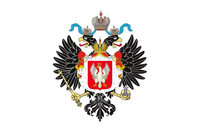World War I (1914-1918)

Battle of Łódź
The Battle of Łódź took place from November 11 to December 6, 1914, near the city of Łódź in Poland. It was fought between the German Ninth Army and the Russian First, Second, and Fifth Armies, in harsh winter conditions.
Background
By September 1914 the Russians Russian Empire was an empire and the final period of the Russian monarchy from 1721 to 1917, ruling across large parts of Eurasia. The rise of the Russian Empire coincided with the decline of neighbouring rival powers: the Swedish Empire, the Polish–Lithuanian Commonwealth, Qajar Iran, the Ottoman Empire, and Qing China. Russia remains the third-largest empire in history, surpassed only by the British Empire and the Mongol Empire. had defeated the Austro-Hungarians
Russian Empire was an empire and the final period of the Russian monarchy from 1721 to 1917, ruling across large parts of Eurasia. The rise of the Russian Empire coincided with the decline of neighbouring rival powers: the Swedish Empire, the Polish–Lithuanian Commonwealth, Qajar Iran, the Ottoman Empire, and Qing China. Russia remains the third-largest empire in history, surpassed only by the British Empire and the Mongol Empire. had defeated the Austro-Hungarians Austria-Hungary, often referred to as the Austro-Hungarian Empire, the Dual Monarchy, or Austria, was a constitutional monarchy and great power in Central Europe between 1867 and 1918. Austria-Hungary was one of the Central Powers in World War I, which began with an Austro-Hungarian war declaration on the Kingdom of Serbia on 28 July 1914. in the Battle of Galicia. The Austro-Hungarian retreat isolated their fortress of Przemyśl, which was besieged by the Russian Eighth Army. The armies on the Russian Northeast Front, commanded by Nikolai Ruzsky, had driven the outnumbered Germans
Austria-Hungary, often referred to as the Austro-Hungarian Empire, the Dual Monarchy, or Austria, was a constitutional monarchy and great power in Central Europe between 1867 and 1918. Austria-Hungary was one of the Central Powers in World War I, which began with an Austro-Hungarian war declaration on the Kingdom of Serbia on 28 July 1914. in the Battle of Galicia. The Austro-Hungarian retreat isolated their fortress of Przemyśl, which was besieged by the Russian Eighth Army. The armies on the Russian Northeast Front, commanded by Nikolai Ruzsky, had driven the outnumbered Germans The German Empire, also referred to as Imperial Germany, the Second Reich, as well as simply Germany, was the period of the German Reich from the unification of Germany in 1871 until the November Revolution in 1918, when the German Reich changed its form of government from a monarchy to a republic. During its 47 years of existence, the German Empire became the industrial, technological, and scientific giant of Europe. back out of Poland
The German Empire, also referred to as Imperial Germany, the Second Reich, as well as simply Germany, was the period of the German Reich from the unification of Germany in 1871 until the November Revolution in 1918, when the German Reich changed its form of government from a monarchy to a republic. During its 47 years of existence, the German Empire became the industrial, technological, and scientific giant of Europe. back out of Poland Congress Poland, Congress Kingdom of Poland, or Russian Poland, formally known as the Kingdom of Poland, was a polity created in 1815 by the Congress of Vienna as a semi-autonomous Polish state, a successor to Napoleon's Duchy of Warsaw. It was established when the French ceded a part of Polish territory to the Russian Empire following France's defeat in the Napoleonic Wars. In 1915, during World War I, it was replaced by the German-controlled nominal Regency Kingdom until Poland regained independence in 1918. in the Battle of the Vistula River, although the German incursion had postponed the projected Russian invasion into German Silesia. The Russian high command considered how to capitalize on their recent successes. Grand Duke Nicholas Nikolayevich favored an offensive into East Prussia, while his Chief of Staff, Mikhail Alekseev, favored an invasion of Silesia, as soon as they had repaired the extensive damage the Germans had done to the roads and railways on the Polish side of the border.
Congress Poland, Congress Kingdom of Poland, or Russian Poland, formally known as the Kingdom of Poland, was a polity created in 1815 by the Congress of Vienna as a semi-autonomous Polish state, a successor to Napoleon's Duchy of Warsaw. It was established when the French ceded a part of Polish territory to the Russian Empire following France's defeat in the Napoleonic Wars. In 1915, during World War I, it was replaced by the German-controlled nominal Regency Kingdom until Poland regained independence in 1918. in the Battle of the Vistula River, although the German incursion had postponed the projected Russian invasion into German Silesia. The Russian high command considered how to capitalize on their recent successes. Grand Duke Nicholas Nikolayevich favored an offensive into East Prussia, while his Chief of Staff, Mikhail Alekseev, favored an invasion of Silesia, as soon as they had repaired the extensive damage the Germans had done to the roads and railways on the Polish side of the border.
On 1 November, Paul von Hindenburg was appointed commander of the two German armies on the Eastern Front. His Eighth Army was defending East Prussia. It was withdrawn from the frontier to occupy a defensive line. The Russians followed, attacking the line and re-occupying the eastern parts of the province, so its inhabitants fled once again. Hindenburg's Ninth Army, under General August von Mackensen, was on the border between Poland and Silesia. Intercepted, decoded Russian wireless messages revealed that Silesia would be invaded on 14 November. Hindenburg and Ludendorff decided not to meet the attack head-on, but to seize the initiative by shifting their Ninth Army north by railway to the border south of the German fortress at Thorn, where they would be reinforced with two corps transferred from Eighth Army. The enlarged Ninth Army would then attack the Russian right flank. In ten days Ninth Army was moved north by running 80 trains every day. Conrad von Hotzendorf, the Austrian commander, transferred the Austrian Second Army from the Carpathians to take over the German Ninth Army's former position.
General Nikolai Ruzsky had recently assumed command of the Russian Northwest Army Group defending Warsaw. Ruzsky had under his command General Paul von Rennenkampf's Russian First Army, most of which was on the right bank of the Vistula River; only one corps was on the left bank. Ruzsky also directed the Russian Second Army, under General Scheidemann, which was positioned in front of the city of Łódź. Both armies were still in summer clothing, and the Russians were short of artillery ammunition.
The Battle
The Russians had no inkling that the Germans had moved north, so they were stunned on November 11 when Mackensen's German Ninth Army struck V Siberia Corps of Rennenkampf's First Army, his only unit on the left bank of the Vistula. The Siberians were routed; 12,000 were taken prisoner. The Siberians were unable to dig effective defensive positions because they had few shovels and the ground froze at night. The Germans were forcing open a corridor between Łódź and Warsaw, creating a 50 km (31 mi) gap between the Russian First and Second Armies. Scheidemann's Russian Second Army retreated eastward towards Łódź, they were threatened with encirclement. Rennenkampf wanted to support V Siberia Corps by moving more men across the Vistula, but Ruzsky suspected that the target was Warsaw, so First Army remained in place.
Grand Duke Nicholas's primary objective was saving Second Army and avoiding a repeat of the disaster at Tannenberg. On 16 November he ordered Wenzel von Plehve's Russian Fifth Army to abandon the proposed offensive into Silesia and to move northward towards Łódź; they marched 116 km (72 mi) in only two days. As soon as Hindenburg saw the transcript of this order, he knew that his maneuver had succeeded. Now seven Russian corps were defending the city. Plehve smashed into Mackensen's right flank on November 18 in bitter winter conditions (at times the temperature dropped as low as 10 °F (−12 °C).
The German Ninth Army's right wing was XXV Reserve Corps, commanded by Lieutenant General Freiherr Reinhard von Sheffer-Boyadel, a 63-year-old who had been recalled from retirement. With Lieutenant General Manfred von Richthofen's, great uncle of the flying ace, cavalry in the van, they were pushing southeast between Łódź and the Vistula. Part of Rennenkampf's First Army was finally moving east to attack the Germans. Their re-positioning was hindered when a makeshift bridge across the river collapsed, so they had to cross by ferry or on the nearest usable crossing 85 km (53 mi) upstream. Once over they attacked the weakly defended side of the corridor extending south from the German frontier to their advancing spearhead. The Russians reoccupied Brzeziny, cutting the roads used by German XXV reserve corps, whose progress south was now blocked by the Russian Fifth Army. Sheffer was ordered to stop advancing, but the order did not reach him. Suddenly it was the Germans who were ensnared in a pocket. Mackensen stopped attacking toward Łódź, turning to help to extricate them. The ecstatic Russians ordered trains for up to 20,000 prisoners, actually the German fighting strength in the pocket was about 11,000, but there were also 3,000 wounded. Other sources state that 50,000 prisoners were anticipated.
Hindenburg was alarmed by the intercepted wireless messages ordering the trains, but Mackensen assured him that they would prevail. In the pocket, Richthofen's cavalry, which had been leading the advance, reversed direction to screen the rear of three infantry columns Sheffer formed along the roads for the retreat back northwest. The frozen, hungry Germans pushed on through the icy night. They reached the outskirts of Breziny unobserved, because most of the 6th Siberian Division were huddling in their sleeping quarters, trying to keep from freezing. The Germans attacked at dawn with bayonets on unloaded rifles and occupied much of the town before a shot was fired. The commander of 6th Siberian Division broke down. Swamped with conflicting accounts of German movements, and with the weather too foggy and the days too short for aerial observation, Ruzsky issued a series of orders, each contradicting the one before. He focused on preventing further German moves south instead of their thrust to the north. On 26 November, XXV Reserve Corps broke out of the pocket, bringing with them 12,000 prisoners, some taken during the breakout, who pulled 64 captured guns. Inconclusive fighting continued until 29 November when at a conference with his front commanders Grand Duke Nicholas ordered his forces in Poland to withdraw to defensible lines nearer to Warsaw. Hindenburg learned from an intercepted wireless that Łódź was to be evacuated. The Germans moved in on 6 December, occupying a major industrial city with a population of more than 500,000 (about 70% of the population of Warsaw). German casualties were 35,000, while Russian losses were 70,000 plus 25,000 prisoners and 79 guns.
Hindenburg summed it up: "In its rapid changes from attack to defense, enveloping to being enveloped, breaking through to being broken through, this struggle reveals a most confusing picture on both sides. A picture which in its mounting ferocity exceeded all the battles that had previously been fought on the Eastern front!" The Polish winter bought a lull to the major fighting. A Russian invasion of Silesia must wait for spring. By this time, the Russians feared the German army, which seemed to appear from nowhere and to win despite substantial odds against them, while the Germans regarded the Russian army with "increasing disdain." Hindenburg and Ludendorff were convinced that if sufficient troops were transferred from the Western Front, they could force the Russians out of the war.
HISTORY

RESOURCES
This article uses material from the Wikipedia articles "World War", "World War I", and "Battle of Łódź", which is released under the Creative Commons Attribution-Share-Alike License 3.0.
© Stories Preschool. All Rights Reserved.










